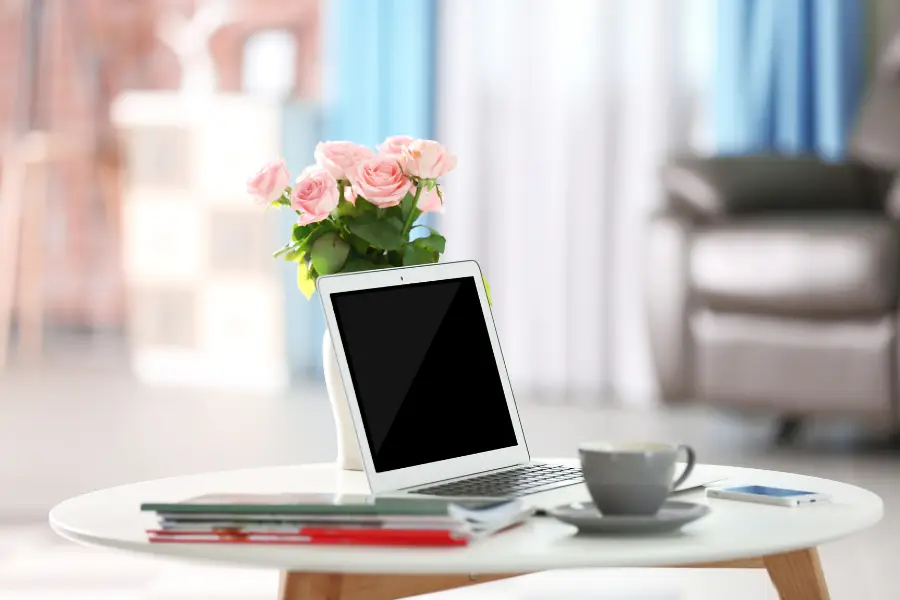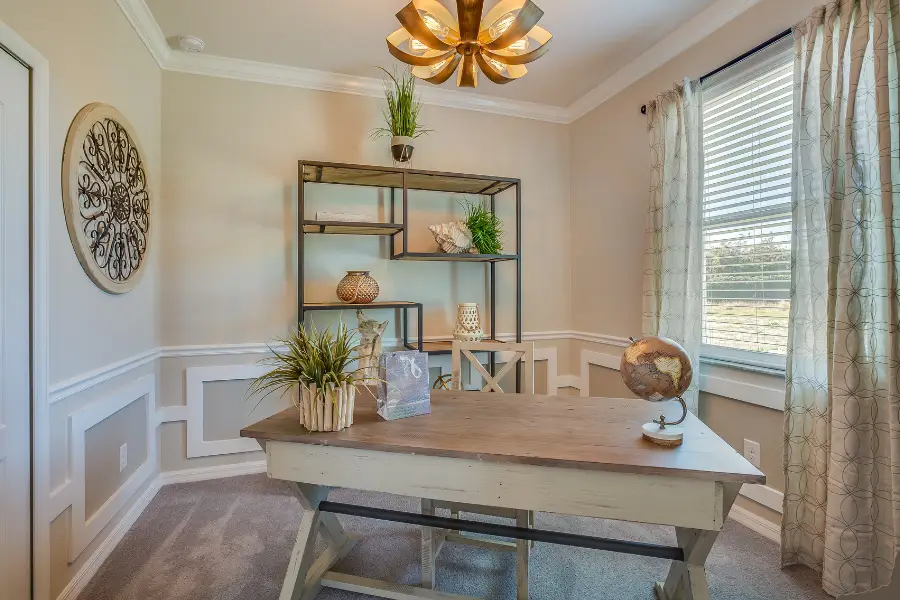Table of Contents
In today’s fast-paced world, having a dedicated space for fitness and work is more crucial than ever. The demand for a gym and home office has skyrocketed, thanks to the rise of remote work and increasing focus on personal wellness. Creating a well-balanced environment that caters to your physical and mental needs can be a game-changer in your productivity and health journey.
From ergonomic office designs to functional gym layouts, this guide will help you build the perfect setup in your home, no matter the size or budget. Not only will we discuss how to blend work and fitness into one cohesive space, but we’ll also provide practical tips, statistics, and design recommendations to help you get started.
Why You Need a Home Gym and Office Set up
The importance of having a gym and office set up at home is more than just about convenience; it’s about efficiency, productivity, and well-being. Whether you’re working from home full-time or occasionally, having a dedicated workspace is essential for focus. Similarly, maintaining a home gym allows you to manage your health without the need for a gym membership or commute.
Statistics to Consider
According to a study by Stanford University, remote workers are 13% more productive than their office-bound counterparts.
Fitness experts recommend at least 150 minutes of exercise per week to maintain good health.
By combining these two essential spaces, you can seamlessly integrate work and fitness into your daily routine, boosting both physical and mental health.
Planning the Perfect Space
Before diving into furniture and equipment purchases, it’s important to assess your available space and personal needs. A gym and office setup should cater to your specific fitness goals and work requirements.
Consider the following
Work Requirements: Do you need multiple monitors, a desk, a standing option, or a filing system? These should dictate the layout of your office space.
Fitness Goals: Are you focusing on cardio, strength training, or flexibility? Your goals will determine the type of gym equipment you need.
Additionally, try to allocate separate spaces for work and gym activities if possible. This separation helps in maintaining focus, allowing you to switch between tasks mentally.

Ergonomic Office Setup
Ergonomics is crucial when creating a productive home office. An uncomfortable setup can lead to back pain, neck strain, and fatigue, significantly impacting your work performance and overall health.
Essential Ergonomic Tips
Chair and Desk Height: Ensure your chair allows your feet to rest flat on the ground and your elbows to remain at a 90-degree angle when typing.
Monitor Placement: Your monitor should be at eye level to prevent strain on your neck and shoulders.
Adjustable Desk: Consider investing in a standing desk for flexibility during long work hours. Standing desks have been shown to reduce back pain and improve mood.
Investing in ergonomic furniture may seem like a significant expense, but it’s essential for long-term productivity and well-being.
Gym Essentials
When planning your home gym, consider your fitness objectives and the available space. You don’t need a large room filled with equipment to stay fit. Minimalism is key for small spaces, while multi-functional equipment can provide versatility in a larger room.

Recommended Gym Equipment
Dumbbells or adjustable weights for strength training.
A yoga mat for flexibility and core exercises.
Resistance bands for a full-body workout.
A stationary bike or treadmill for cardio (if space permits).
Pull-up bars that can easily be installed in door frames.
Remember, the equipment you select should align with your personal goals. If strength training is your primary focus, free weights and resistance bands are more valuable than a treadmill.
Design Ideas for Small Spaces
Living in a small space doesn’t mean you have to compromise on a gym and office setup. With careful planning and innovative design, even the smallest spaces can become functional work and fitness zones.
Space-Saving Tips
Foldable furniture: Opt for desks and chairs that can be folded away when not in use.
Multi-functional equipment: Invest in compact gym equipment like adjustable dumbbells and portable resistance bands.
Vertical storage: Utilise wall-mounted shelves and racks to store office supplies and gym gear.
In a small apartment or studio, the key is to create dual-purpose zones where people can easily switch between work and fitness.
Blending Office and Gym
A major challenge of creating a gym and office setup is ensuring that both spaces blend aesthetically. A cluttered gym can easily spill into your work environment, making it harder to focus.
Aesthetic Tips
Use neutral colors and calming tones to create a space that promotes focus and relaxation.
Opt for storage solutions like cabinets or boxes to keep workout equipment hidden during work hours.
Minimalist design: Keep décor to a minimum, using only what is necessary for motivation, such as inspirational posters or plants.
A unified aesthetic makes your home feel less chaotic and promotes a productive environment for both work and exercise.
Smart Office and Gym Tools
Technology can play a crucial role in enhancing your gym and office experience. From fitness tracking apps to smart office gadgets, the right tech tools can streamline your daily routine.
Recommended Tech Tools
Fitness apps like MyFitnessPal or FitOn to track workouts and progress.
Standing desk converters that adjust based on the time you spend seated.
Smart lighting systems that adjust brightness for your work or workout mood.
Noise-canceling headphones to create a focused environment in a shared household.
Integrating smart devices into your gym and office setup will help you stay organized and motivated.
Maintaining Work-Life Balance
Balancing work and fitness at home can be challenging, especially when both spaces are so close. Creating boundaries between work and personal time is essential for maintaining a healthy work-life balance.
Tips for Maintaining Balance
Set strict working hours and stick to them.
Schedule breaks to stretch or do a short workout between tasks.
Avoid bringing work into your gym space, and vice versa.
Remember, the goal of a home gym and office is to enhance productivity and well-being. A clear separation between work and fitness time helps maintain this balance.
Budgeting for Your Setup
Creating a gym and office setup can seem like a financial burden, but it doesn’t have to be. Prioritize what’s most important to you and make strategic purchases over time.
Budgeting Tips
Start with second-hand furniture or gym equipment. Many platforms sell quality used items.
Focus on multi-functional furniture to save money and space.
Begin with the basics and slowly add more specialized equipment as your needs grow.
Having a clear budget and plan can make the setup process more manageable and less overwhelming.
For more practical guides on setting up your home gym and office, check out our detailed post on gym and office setup.
Conclusion
Designing a gym and office set up at home is a smart move for anyone looking to boost productivity and maintain a healthy lifestyle. With thoughtful planning, even small spaces can serve dual purposes without sacrificing style or functionality. Whether you’re creating a minimalistic setup or splurging on top-notch equipment, the key is to ensure that both spaces complement each other to enhance your work and fitness routine.
Have you set up your gym and office at home? Share your experience in the comments below! For more insightful guides, make sure to check out our other posts.
FAQs
What is the best way to create a gym and office setup at home?
Start by assessing your space and personal needs, then design a layout that separates work and fitness activities while prioritising ergonomics and functional gym equipment.
How much space do I need for a home gym and office?
Fold able furniture and multi-functional gym equipment can efficiently utilise even small spaces. Prioritise vertical storage and mini malistics design.
What are the best gym equipment options for small spaces?
Resistance bands, adjustable dumbbells, yoga mats, and fold able cardio machines are ideal for smaller setups.
How do I maintain a work-life balance with a gym and office setup?
Set strict working hours, schedule breaks for short workouts, and create clear boundaries between your work and gym areas.
How much should I budget for a home gym and office?
Start with essential ergonomic furniture for your office and basic gym equipment. Use second-hand options or buy gradually to spread out costs.

